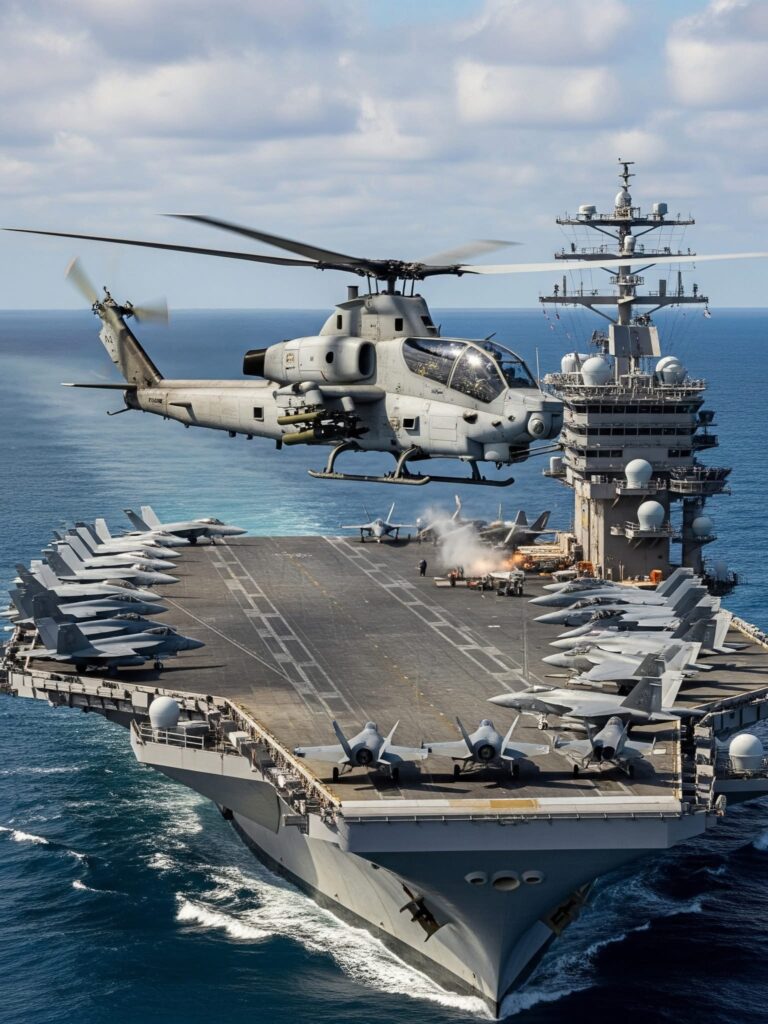
The Bell AH-1Z Viper, also known as the “Zulu Cobra,” is the United States Marine Corps’ premier attack helicopter. Evolved from the legendary AH-1 Cobra, the Viper is the most advanced twin-engine attack helicopter in the world, designed to deliver unmatched firepower, agility, and survivability on the modern battlefield.
Evolution of the Cobra Line
The AH-1Z is the latest member of the Cobra family, which dates back to the Vietnam War with the original AH-1G. While it carries the Cobra’s iconic narrow profile, the AH-1Z is a thoroughly modern platform. Introduced in the early 2000s under the H-1 Upgrade Program, the Viper was developed alongside the UH-1Y Venom utility helicopter, giving the Marine Corps a common fleet with 85% parts compatibility. This streamlines logistics, training, and maintenance while improving battlefield readiness.
Design and Airframe
The AH-1Z features a reinforced airframe built for durability and survivability in harsh environments. Unlike earlier Cobras, the Viper uses a four-blade, composite main rotor system that reduces vibration, increases lift, and enhances overall performance. The tail rotor, also four-bladed, provides better control and stability, especially during low-speed maneuvering. Composite materials throughout the airframe reduce weight while resisting damage from small arms fire and shrapnel.
Engines and Performance
Powered by two General Electric T700-GE-401 turboshaft engines, the AH-1Z delivers exceptional power and reliability. These engines enable a maximum speed of around 250 knots (approximately 370 km/h) and an impressive operational range of over 250 nautical miles. The helicopter is capable of carrying heavy weapons loads while maintaining high agility, making it effective in both close air support and anti-armor roles.
Avionics and Sensors
One of the AH-1Z’s greatest strengths is its state-of-the-art avionics suite. The cockpit features glass displays, helmet-mounted sights, and hands-on-throttle-and-stick controls that reduce pilot workload and maximize efficiency. At the core of its targeting capabilities is the Target Sight System (TSS), a forward-looking infrared sensor that provides long-range target detection, identification, and tracking in day or night conditions. Combined with integrated data links, the Viper can share information with ground forces and other aircraft, enhancing situational awareness across the battlespace.
Weapons and Firepower
The Viper is designed for maximum lethality. It is armed with a 20mm M197 three-barrel Gatling gun mounted beneath its nose for close-range engagements. On its stub wings, the helicopter can carry a wide variety of ordnance, including:
- AGM-114 Hellfire missiles for precision strikes against armored vehicles and fortifications.
- Hydra 70 rocket pods for area suppression.
- AIM-9 Sidewinder air-to-air missiles for defense against enemy aircraft.
This diverse weapons package gives the AH-1Z the ability to engage multiple types of targets, from ground forces to enemy helicopters and drones.
Role and Operational Use
The AH-1Z Viper plays a critical role in Marine Corps expeditionary operations. Whether providing close air support for Marines on the ground, conducting anti-armor missions, or escorting transport helicopters, the Viper is versatile and battle-ready. Its rugged design also allows it to operate effectively from amphibious assault ships, giving it global reach.
Conclusion
The AH-1Z Viper is the pinnacle of the Cobra lineage, combining decades of combat-proven design with modern technology. With its powerful engines, advanced avionics, and devastating firepower, it ensures that the U.S. Marine Corps has a reliable, lethal, and adaptable attack helicopter for the 21st century battlefield.


